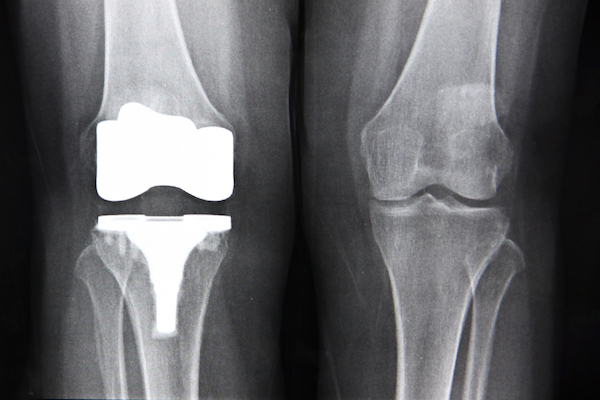Medico-legal examination of the knee and leg is a common practice for Lex Medicus medico-legal experts.
The knee is one of our most sophisticated joints, formed by the articulation of the bones of the upper and lower leg, the femur and tibia, and a disk-shaped bone, the patella, all of them connected together by ligaments, tendons and large muscles. Other components that are essential in permitting the function of the knee are the menisci, the knee capsule and the bursas, which are 11 in total (find the anatomy of the knee here). The integrity of each one of these elements can be compromised through various conditions.
Because of its major role in supporting the body’s weight during ambulation, the knee is susceptible to several pathologies, particularly osteoarthritis due to ageing and overuse or autoimmune diseases such as rheumatoid arthritis. Other most common knee pathologies include fractures, anterior and posterior cruciate ligament injuries, collateral ligament injuries, dislocations, meniscal tears, bursitis, tendonitis, tendon tears, and ilio-tibial band syndrome.
Among the most frequent pathologies, knee osteoarthritis is common in patients over the age of 60 years, often requiring knee replacement surgery with artificial joint prostheses. The incidence of knee osteoarthritis in Australia is reflected by the high number of total knee replacements, which were over 55,000 in 2017 alone, a number increasing each year.

X-ray of a total knee prosthesis
Knee examination in the medico-legal setting
In the medico-legal space, many of our examinees are seen by our Lex Medicus consultants for problems related to the knee. Some of these conditions may be the result of falls, work injuries or overuse, road traffic accidents, sport trauma, and other causes.

Patellar subluxation is used as a test to detect abnormalities in patellar ligaments
Based upon its complex anatomy and function, the examination of the knee relies on specific anatomical landmarks used as reference points to detect morphological changes. From here, the doctor will apply evidence-based medical tests to form a precise diagnosis. The examiner, commonly an orthopaedic surgeon, must have a thorough knowledge of the knee anatomy to assess underlying abnormalities and diseases.
In today’s newsletter, you can learn about the medico-legal examination of the knee, which includes a few basic anatomical descriptions, the landmarks used as coordinates for the examination, and the range of movement of a healthy knee, which is the standard used to demonstrate abnormalities of the examinee’s knee function.
In the link provided, we describe in detail over 25 specific tests that help the consultant to identify the joint structure that has been compromised by a pathology. This also includes abnormalities of the vasculature and the dysfunction of the peripheral nerves.
In order to illustrate what to expect during a medico-legal knee examination, each test description is accompanied by professional photographs of Mr Thomas Kossmann performing the manoeuvres on a real model.
To achieve an in-depth understanding of the anatomy of the knee and the leg, please click this link.
Disclaimer: All images and content published in the Lex Medicus, and Lex Medicus Publishing websites are protected by copyright.
